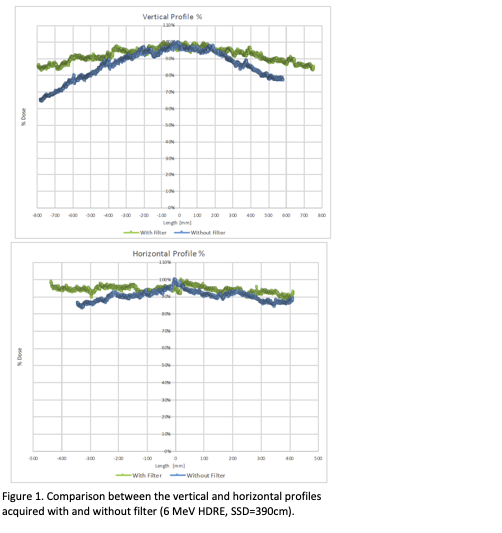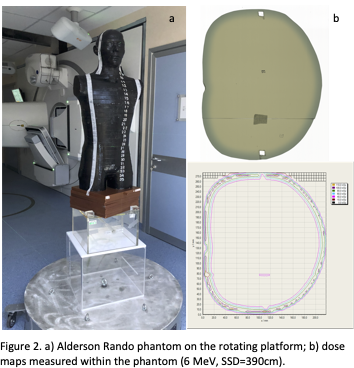Implementation of rotational total skin electron therapy with an in-house-built flattening filter
PO-1840
Abstract
Implementation of rotational total skin electron therapy with an in-house-built flattening filter
Authors: Livia Marrazzo1, Deborah Chilà1, Gabriele Simontacchi2, Marta Casati3, Margherita Zani4, Chiara Arilli4, Antonella Compagnucci4, Cinzia Talamonti1, Lorenzo Livi1, Stefania Pallotta1
1University of Florence, Department of Experimental and Clinical Biomedical Sciences "Mario Serio", Firenze, Italy; 2Careggi University Hospital, Radiation Oncology, Firenze, Italy; 3Careggi University Hospital, Medical Physics , Firenze, Italy; 4Careggi University Hospital, Medical Physics, Firenze, Italy
Show Affiliations
Hide Affiliations
Purpose or Objective
Total Skin Electron Therapy (TSET) is a technique aiming at the irradiation of the whole skin. In our Institution, an old fashioned six dual fields technique has been employed for the last 13 years. Recently a new linac was installed and commissioned and this drove us toward the development of a new rotational technique (to potentially improve patient dose homogeneity, patient comfort and treatment delivery) with a specifically designed flattening filter (to avoid the necessity for a dual field).
Material and Methods
The developed technique was inspired by the work of Reynard [1]. A rotating platform, able to rotate at variable speed, was designed and manufactured. Two different energies delivered with high dose rate (HDR) modality were tested and commissioned (6MeV and 8MeV electrons) with the aim of having different treatment depth according to patients’ disease features. Several configurations of the flattening filter were tested to improve beam homogeneity, as well as different source-to-surface distances (SSD) to select the best beam penetration according to the clinical requirements. PDDs and profiles were measured with EBT3 films.
Once the best combination of parameters was selected, the absolute delivered dose per Monitor Unit (MU) was measured by using an Advanced Markus plane parallel ionization chamber.
To calculate MUs to be delivered on the rotating patient, the ratio between the static output, measured in a cylindric phantom (30cm diameter) with EBT3 films placed on the phantom surface, and the rotational output (same measurement but with rotating phantom), was assessed.
Finally, an end-to-end test was accomplished using an Alderson Rando Phantom. The end-to-end test was repeated twice to test repeatability.
Results
The rotating platform was set to rotate with a speed of 3rpm, which was considered comfortable to the patient and at the same time allowing enough rotations to guarantee dosimetric independence of start and stop positions.
In Figure 1 the comparison between horizontal and vertical profiles with and without filter (6 MeV HDRE, SSD=390cm) is reported.

In Figure 2 the maps measured at the level of the Alderson Rando abdomen is reported, together with a picture of the phantom on the rotating platform. The repeated measurements demonstrated a good reproducibility of the delivery.

The required dose of 1Gy per fraction at the patient surface is delivered in approximately 9 minutes.
Conclusion
The new developed rotational technique is promising in terms of dose homogeneity to the patient and easiness of delivery, and it will soon enter in our clinical practice.
[1] Reynard et al, 2008